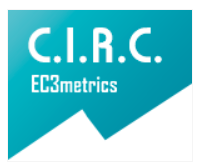Validation protocols for the approachof pathology sensorineural hearing
Validación de protocolos para el abordaje de patologías auditivas neurosensoriales
Main Article Content
We present the results of research aimed at validation of protocols for addressing sensorineural hearing disorders, designed y D. Leal, and Quevedo, M.in 2009. The overall objective of the study was “To determine the reason for the validity and necessary adjustments protocols for addressing hearing disorders through trial neurosensorial experts “, the specific objectives were designed to: Identify the reason for the criterion validity relevance, sufficiency and identify items that need to be removed or corrected and set the protocols for addressing sensorineural hearing disorders at the discretion qualification of expert judges. The study found the ratio of content validity of the protocols, and produced a version adjusted thereof. The validation process was conducted through a trial of experts, for which they were called 18 audiologists, audiology specialists at national, who evaluated the protocols under the criteria of relevance and sufficiency. As It was determined that the protocols meet these criteria but require adjustments content and structure suited to the current legislation on the design of this type instrument.
Downloads
Publication Facts
Reviewer profiles N/A
Author statements
Indexed in
- Academic society
- Bogotá: Corporación Universitaria Iberoamericana
- Publisher
- Bogotá: Corporación Universitaria Iberoamericana
Article Details
Alcalá, M, (2009). Protocolos de manejo clínico del cáncer. Recuperado en www.cancer.gov.co/documento/Metodologia_Protocolos.pdf. (Junio 17 de 2010).
Bostwick, G. J. Y Kyte, N.S. (2005). Measurement. En: R.M. Grinnell y Y.A. Unrau (Eds.). Social Work.Research and evaluation.Quantitative and qualitative approaches(7ª. Ed. P. 97-111). Nueva York: Oxford university Press.
Cohen, R, Swerdlik, M y Velázquez, J. (2001). Pruebas y evaluación psicológicas- Introducción a las pruebas y a la medición (4ta edición) México. Editorial Mc Graw Gil.
Congreso de Colombia. (2007, octubre 3). Ley 1164 de 2007. Por la cual se dictan disposiciones en materia de Talento Humano en Salud. Bogotá D.C.
Jimeno, L, López, O, Ortega, S y Pérez, M. (2010). Validación de los protocolos en audiometría tonal, logoaudiometria e inmitancia acústica. Trabajo de grado especialización en audiología. Corporación Universitaria Iberoamericana, Bogotá, Colombia.
Leal, D y Quevedo, M. (2009). Diseño de Protocolos para el Abordaje de Patologías Auditivas Neurosensoriales. Trabajo de grado especialización en audiología no publicada. Corporación Universitaria Iberoamericana, Bogotá, Colombia.
Mertens, D.M. (2005). Research and evaluation in Education and Psychology: Integrating diversity with quantitative, qualitative, and mixedmethods. (2ª. Ed.) Thousand, Oaks: Sage.
Ministerio de la Protección Social. (2006, Abril 3) Decreto 1011. Bogotá D.C.
Ministerio de la Protección Social. (2006, Abril 3) Resolución 1043. Bogotá D.C.
Ministerio de Salud de Colombia. (1999, Julio 8) Resolución 1995. Santafé de Bogotá. D.C.
Ministerio de Salud de Colombia. (2000, Febrero 25) Resolución 00412. Bogotá. D.C.
Romo, V y cols, (2004).Guia Técnica para elaborar protocolos Médicos. Recuperado enwww.jalisco.gob.mx. (Mayo 6 de 2010).
Secretaría Distrital de Salud de Bogotá, (2009). Guía de práctica para la habilitación y certificación de prestadores de servicios de salud, y profesionales independientes. Recuperadoen http//saludcapital.gov.co (Julio 4 de 2010).












